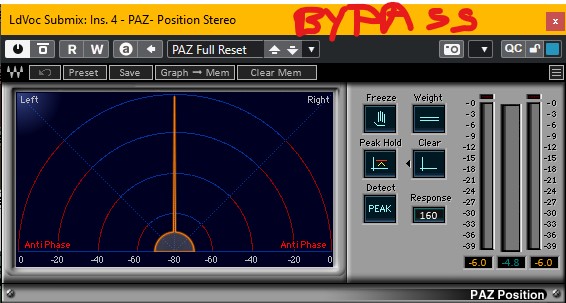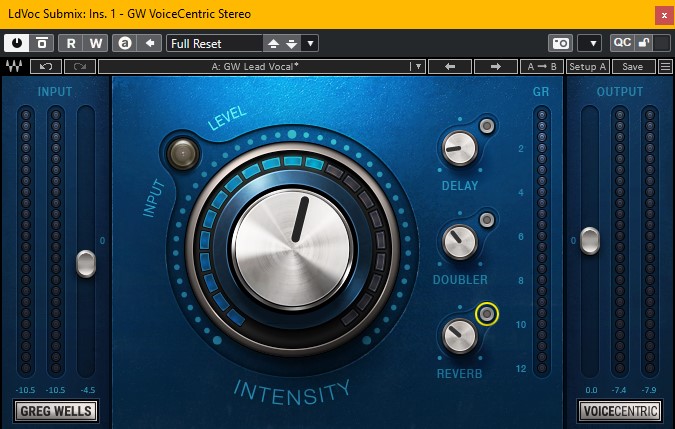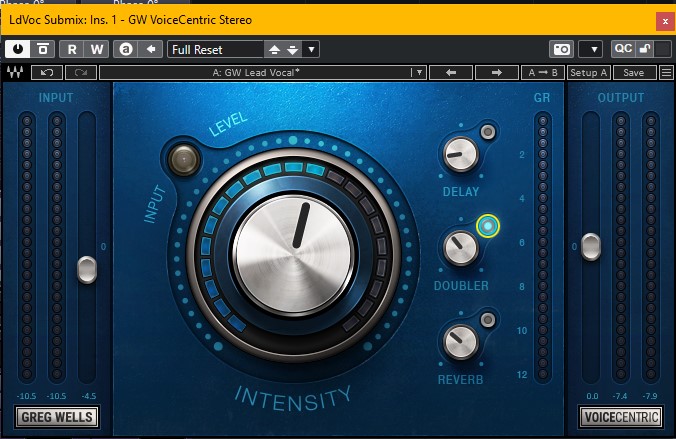Thought I’d try a series of measurements to try to (semi-)objectively check on the shifting. I used the Waves PAZ- Position Stereo plugin to measure various different GW VoiceCentric configurations on a lead vocal playing through a single vocal chorus.
My signal flow for this was mono lead vocal track with all plugins disabled, feeding a stereo lead vocal submix, with GW VoiceCentric in one insert and the PAZ meter after that. (There were also other plugins in the inserts on the bus, but all were disabled for texting purposes.) I also soloed the mono lead vocal track (which also soloed the submix track and mix groups downstream from that, just to be safe). But the PAZ plugin was in that lead vocal submix track so ahead of anything that might have come downstream.
First reading is with GW VoiceCentric disabled:

The next screenshot is the original settings I had on GW VoiceCentric (which I had been using in the lead vocal group track at one point):

Here is the reading from that:

I should note that the live meter bounces around a bit within the yellow area that gives the bounds of the performance’s readings. There is obviously a bit of an asymmetrical shape here, with the little thorn-like protrusion on teh right, but it also looks to me like things might go a bit more to the left in some parts of the yellow boundaries. (My listening environment is not sufficient, and my ears are not sufficiently golden, to make a subjective aural judgement on this, thus my interest in what the meters show.)
Next attempt was bypassing all the effects in VoiceCentric:

Here is the reading:

This looks very much like the plugin disabled results to me.
I’m going to skip more GW VoiceCentric screen shots for brevity, but I then tried turning on one, and only one, FX module at a time to get a picture of how the different modules might contribute to any stereo balance changes.
Here is the one for doubler only:

This does look to me like it might be shifting very slightly to the right.
Here is delay only:

Now we’re back to the lower part of the right jutting out (though not the thorn-like shape), and probably more balance toward the right in general, at least at lower levels of amplitude.
And finally, reverb only:

This one looks like it goes off to the left a bit more.
Verdict? Beats me.  I guess there definitely is some variance, depending on which effects are used (and probably how much of each one). However, I’m not seeing any difference between bypassing the plugin altogether and turning off all three effects.
I guess there definitely is some variance, depending on which effects are used (and probably how much of each one). However, I’m not seeing any difference between bypassing the plugin altogether and turning off all three effects.








